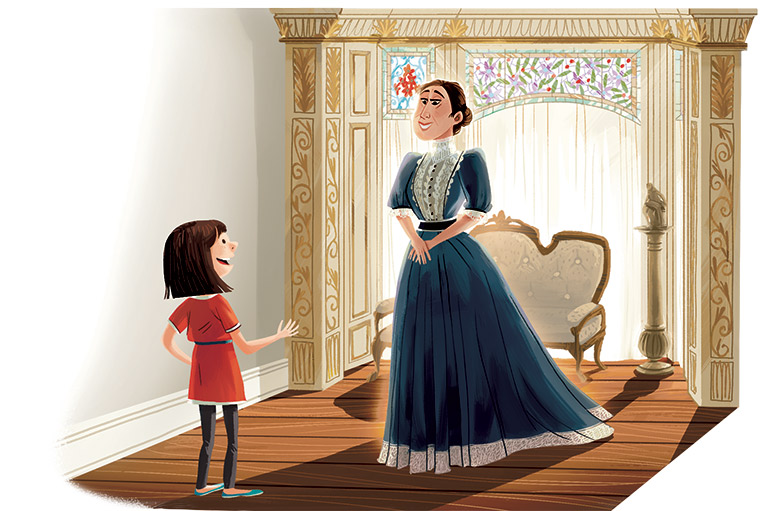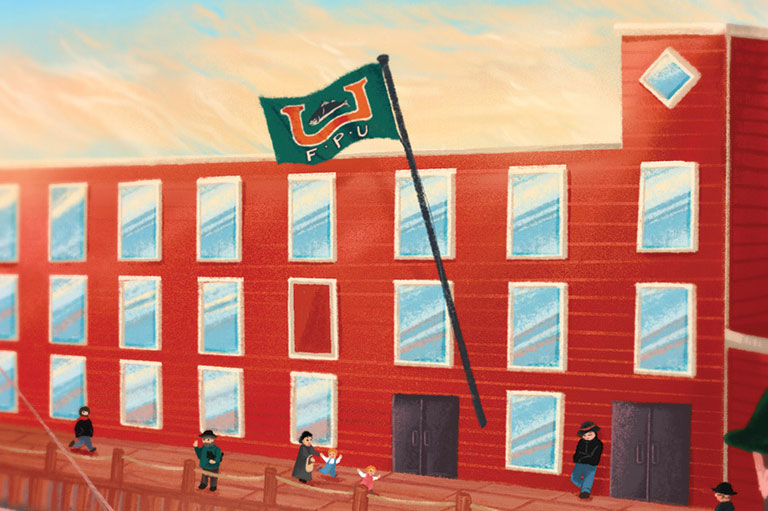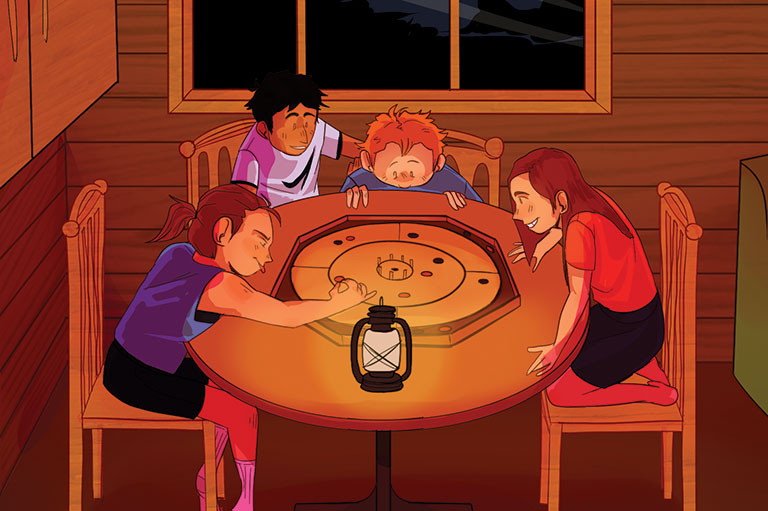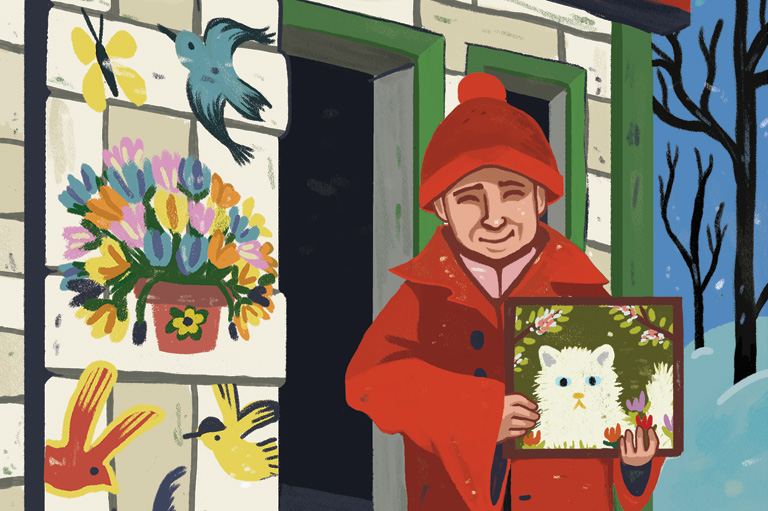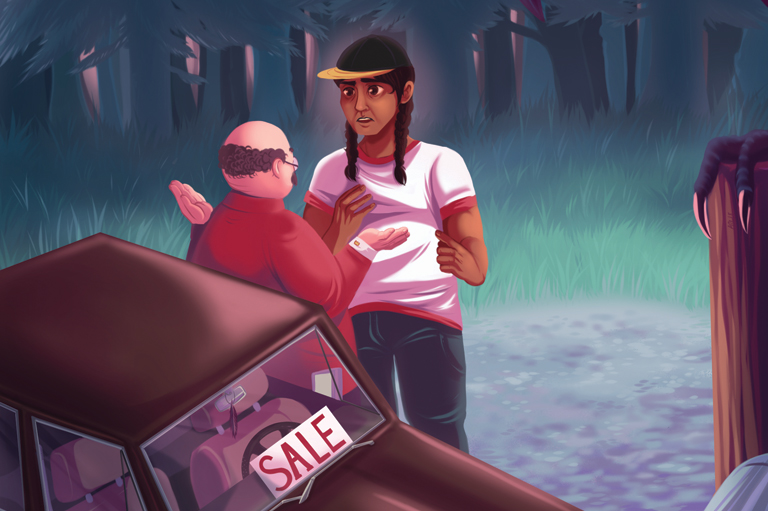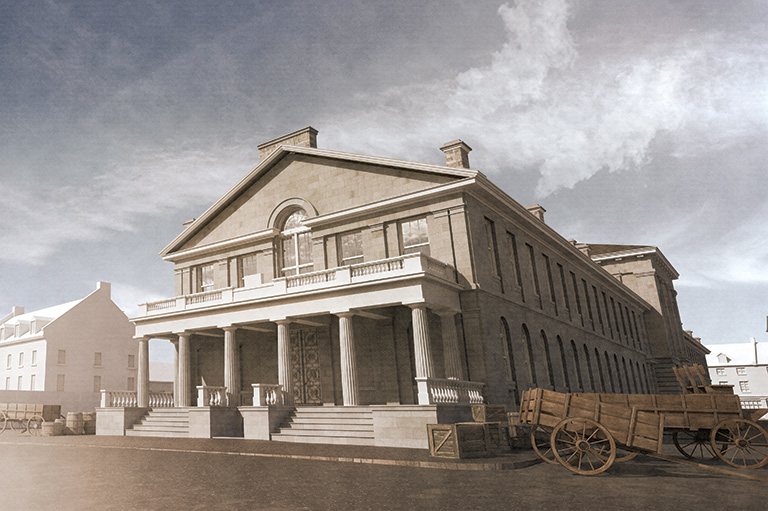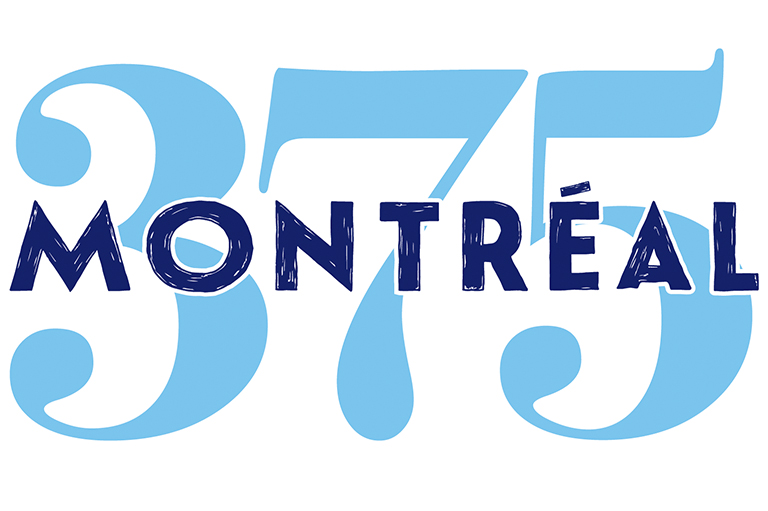Classroom Fight

St. Boniface, Manitoba, August 1888
Click. Pause. Click. Clickety-clack.
Louis slowed down and then stopped. His parents always told him it wasn’t polite to look into someone else’s yard, but he couldn’t help it. The new boy in the village was playing Louis’s favourite game, marbles. Better still, there were flashes of blue and — “C’est rouge?”
The other boy looked up and smiled. “Is rouge the same as red?”
“Oui. Yes!” Louis said. “I’ve heard of red marbles but I’ve never seen one.”
“Do you want to come and play with me? I haven’t met anyone to shoot marbles with since we moved here.”
Louis had seen the wagons arrive but stayed away. After all, his friends said, the new boy was English — bad enough! — and from Ontario — even worse! — so he was probably too snooty to play with Métis kids like them. After all, his father told him that many of the Manitoba Métis had moved west because les anglais had treated them poorly and even squeezed them off of their river lot farms.
As Louis hesitated, the other boy stood up to open the gate. “My name is George,” he said.
“I’m Louis. Louis Joseph Chartrand.” Here’s where the other boy would probably show himself to be an English snob.
“So are you French or Métis?” George asked. Aha! Louis had been right.
“Je suis fier d’être Métis,” he said, standing up tall. “We speak French, but we know English, too.”
George grinned. “I kind of figured that last part out for myself.” The boys both burst out laughing. “My grandmother sent me these marbles from England,” he went on, trying not to sound too proud. “That’s why I have the coloured ones.”
They flicked the smooth little clay globes, laughing and yelping as each tried to knock the other’s marbles around.
The door to the neatly white house opened and George’s mother came out to watch. Suddenly Louis felt his face get hot. George had turned out to be nice, but surely his mother wouldn’t want them playing together.
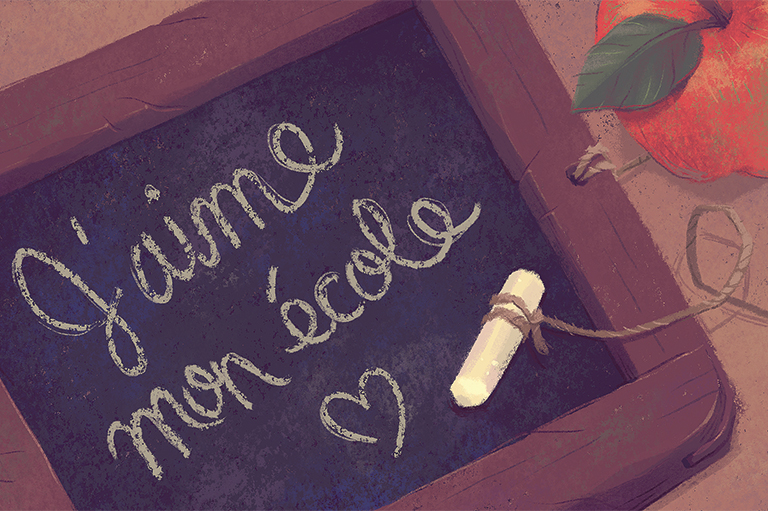
He looked up, a defiant expression on his face, but George’s mother was smiling. “Would your friend like to stay for supper?”
“Merci, mais non. Thank you, but yes. I mean no,” Louis stammered in amazement. “I have to get home to help with chores.”
Mrs. Sinclair nodded understandingly. “Perhaps next time.”
Again, Louis was surprised. “But Madame . . . Usually English boys like George don’t play with Métis boys like me. They say we’re silly Catholics.”
“Well, I think they’re the silly ones, to talk like that,” George’s mother said. “We should all be able to get along no matter what church we go to. And you should all go to one school where you can learn to be friends with each other, too.”
Louis stood up to go, brushing off the dirty knees of his trousers. “Even if I go to a French Catholic school and you go to an English Protestant one, we can still play marbles,” he said to George. “À la prochaine! See you soon!”
August 1890
“C’est scandaleux! Ce n’est pas possible — pas acceptable!” Madame Chartrand banged her fist on one of the desks. Louis stood at the back of the one-room school, staring at the worn wooden floor.
“First of all, you need to speak English,” the teacher said with a glare. “This is now an English school.” His moustache practically vibrated as he struggled to stay polite.
“And that’s exactly the problem!” Louis’s mother snapped. “They say we French Catholics are good enough to pay school taxes but not good enough to get a French Catholic school in return? C’est ridicule!”
Mr. McDonald’s face softened. “I know it doesn’t seem fair, Mme Chartrand, but we have no choice. The government won’t pay for Catholic schools, and all public schools are to teach all lessons in English.”
Mme Chartrand wasn’t giving up. “I remember that day in March, when the government said French was no longer an official language in Manitoba. I thought to myself, ‘We are being swamped by the English settlers, but we can still speak French at home, and we still have our schools.’ But now . . .” her voice trailed off. “How can French survive if we can’t teach it to our children? How will the Métis survive as a people?”
The teacher looked downright unhappy. “I don’t blame you for feeling betrayed. Things are . . . Manitoba is changing.” Louis looked up in amazement. Was stern Mr. McDonald actually being kind?
Louis’s mother put her gloves on and turned to leave, more sad now than angry. “This is a bitter, shameful thing. Viens, Louis.” Louis almost had to run to keep up as she marched through the village.
“Louis! Did you hear?” George called out as they neared his yard. “We’re going to be in the same school this year. Won’t that be grand?”
Louis stopped and looked at his friend for a long moment. “I don’t know,” he said, almost to himself. “I don’t know.”
When Manitoba became part of Canada in 1870, it was a very small area centred on the Red River Settlement around what is now Winnipeg. Just over half of the people there were French-speaking Roman Catholics. Many of them were Métis, born of fathers in the fur trade and First Nations mothers.
The Métis leader Louis Riel ensured their rights were protected in the new province. But English-speaking settlers who belonged to Anglican, Presbyterian, Methodist and other Protestant (non-Catholic) churches soon flooded into the area. The Canadian government encouraged them, hoping to make Manitoba more English and Protestant.
In March 1890, the provincial government stopped providing money for Catholic schools. It also ended the use of French as one of Manitoba’s official languages, ignoring the guarantees of the Manitoba Act, under which the province entered Confederation. The Canadian government could have stepped in to make sure the promise was kept, but didn’t.
In 1896, Manitoba allowed some classes to be taught in French, as well as any other language where there were enough kids who spoke it, and for half-hour classes in religion.
Twenty years later, though, it went back to insisting that no languages other than English could be taught. It was only in 1970 that the two languages could both be taught in schools again.
There are now nearly 25 schools in Manitoba where kids can learn in French as a first language, and many other French immersion schools.
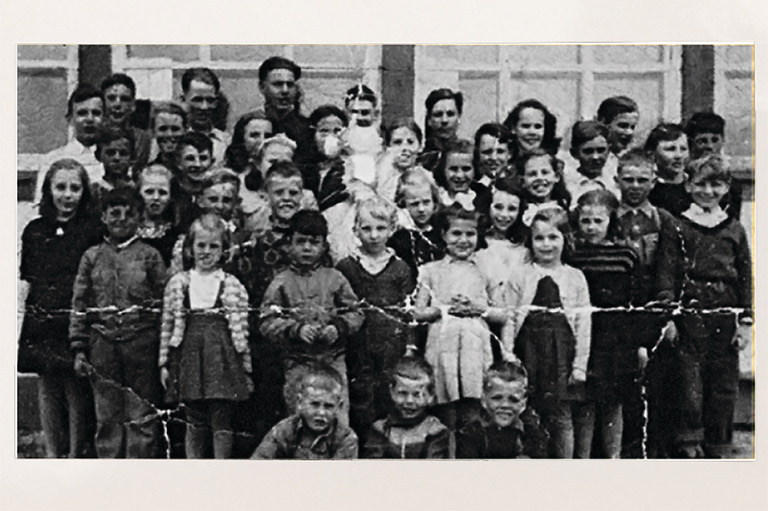
Themes associated with this article
Advertisement
More fiction features
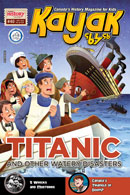
Canada’s History Archive features both English and French versions of Kayak: Canada’s History Magazine for Kids.
Kayak: Canada’s History Magazine for Kids — 3 digital issues per year for as low as $13.99. Tariff-exempt!

